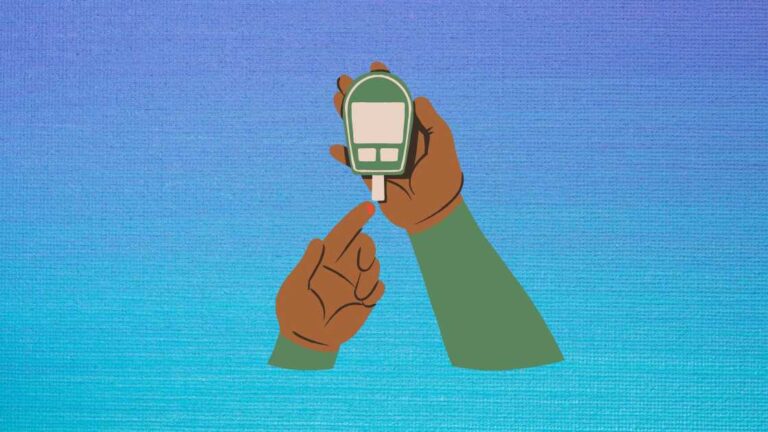One of our body’s most fundamental defenses against dangerous bacteria and viruses is fever. Some people might find it unusual to consider opting not to treat a fever or perhaps purposely inducing one. Fevers are unpleasant, and the majority of us link them to illness.
Fever, however, is a healthy and beneficial process in itself, and in most circumstances, its advantages outweigh its drawbacks.
Let’s take a look at how you can give yourself a fever
What is a fever?
An abrupt increase in body temperature is known as a fever. It is a condition where the body temperature of people rises over normal. Adults typically experience temperatures between 36.5 and 37.5 degrees Celsius (97.7 to 99.5 degrees when measured in Fahrenheit).
37.5 degrees Celsius is regarded as a feverish temperature in children. This means that your body temperature must rise above this normal range if you want to develop a fever. A fever is a small component of the body’s immune system’s total reaction. Infections frequently result in fever.
In most cases, fevers subside after a few days. Many over-the-counter medicines reduce fever.
Symptoms of a fever
Depending on the time of day and the individual, body temperatures might fluctuate slightly. Tradition dictates that the average temperature is 98.6 F. (37 C). In general, a temperature measured with a mouth thermometer (oral temperature) of 100 F (37.8 C) or greater is regarded as a fever.
Other fever symptoms and indicators could be any of the following, depending on the fever’s underlying cause:
- Muscle pains and headaches
- Reduced appetite
- Irritability
- Dehydration
- Sweating
- Shivering
- Chills
- Fatigue
Causes of fever
Fever or a higher-than-normal body temperature could result from:
- Medications, such as antibiotics and drugs used to treat high blood pressure or seizures
- Some vaccinations, such as the pneumococcal or COVID vaccine, diphtheria, tetanus, and acellular pertussis (DTaP)
- A viral infection
- A bacterial infection
- Heat exhaustion
- A cancerous (malignant) tumor
- Several inflammatory diseases, like rheumatoid arthritis, which causes inflammation of the synovial membrane of your joints (synovium)
How to give yourself a fever?
The immune system will begin an attack to try to eliminate the source when an infection occurs. The normal course of this reaction includes a rise in body temperature. This is the way your body naturally fights the virus.
Some people might use this technique to boost their immune systems, therefore they like to make themselves sick.
Let’s take a look at how you can give yourself a fever
Don’t go to sleep or avoid sleeping
You will appear sick if you stay awake for a long time. Sleeping the night before having your temperature taken is optional.
Take up any activity that will enable you to stay awake. To enhance the impact, try taking regular sips of hot coffee and dressing in layers of warm clothing. Your body temperature may rise along with the darkening of the under-eye area.
Place raw ginger under your armpit
It is thought that ginger may raise the temperature of the region in which it is administered. Apply a large chunk of crushed ginger to your armpit for a few hours after properly cleaning it. Using an arm sling or gauze bandage, firmly fasten it to your armpit.
Eat Foods That Cause Fever
Your body temperature can rise as a result of some foods. Spicy foods like red pepper, jalapeño, and peppercorns are some of the most popular ones. To ensure that you produce fever, include these in your standard formula.
Consume Hot Fluids
Drinking hot beverages like coffee, tea, or water will warm your body and cause you to perspire (one of the symptoms of fever).
Drink hot fluids on a regular basis, especially right before taking your body temperature. You can also get a fever by eating a hot bowl of soup with herbs.
Wear thermal attire at night
Alternatively, you could spend the night wearing warm gear. This might be a nighttime dress, sweater, or jacket that has the power to heal your body. Of course, you shouldn’t publicize the fact that you are wearing one. You should wake up in the morning with a greater body temperature than usual.
Take a warm bath
Before measuring your temperature, try submerging yourself in a hot tub for around 30 minutes. One of the simplest and most entertaining ways to raise body temperature is this.
You can unwind in a warm bubble bath. After the bath, dress in warm clothing. The thermometer will display a high reading.
Exercise
Jumping jacks are one workout you might do to raise your body temperature. This is the easiest approach to increasing body temperature. It will raise the body’s core temperature and enhance blood flow.
Do a few rapid jumping jacks, and as a result, your heart rate will increase, which will also improve circulation and ultimately raise body temperature.
How do you treat a fever?
The intensity of a fever determines how you treat it. A low-grade fever without any accompanying symptoms is usually not serious enough to need medical attention. In most cases, a fever can be treated with fluids and bed rest.
In order to manage a raised body temperature when it comes with moderate symptoms like general discomfort or dehydration, try the following:
- consuming a lot of liquids
- ensuring that the sleeping individual has a comfortable environment in terms of temperature
- using lukewarm water to take a conventional bath or a sponge bath.
- using ibuprofen or acetaminophen (Tylenol) (Advil)
How to prevent fever
One of the best ways to prevent a fever is to limit your exposure to infectious diseases and agents. It is common for infectious agents to raise body temperature. Here are some recommendations to help you limit your exposure:
- Wash your hands frequently, particularly before using the restroom, after using the bathroom, and after being around a lot of people.
- Teach your kids the right way to wash their hands. Tell them to thoroughly wash their hands with warm water and soap on the front and back of each hand.
- Bring antibacterial wipes or hand sanitizer with you. When you don’t have access to soap and water, they can be useful.
- Do not touch your lips, eyes, or nose. By doing this, viruses and bacteria have an easier time infecting your body and causing an infection.
- When you cough or sneeze, cover your mouth and nose.
- Don’t let other individuals use your drinking or eating utensils or cups.
Summary
Typically, a fever is a sign of an infection. Though it normally isn’t a problem, the underlying illness can require medical attention. Fever frequently goes away on its own without medical intervention.
The simple yet highly efficient methods mentioned above can help you develop a fever when you want one. These tools are safe to use and won’t have any negative long-term effects on your health.
However, it’s crucial that you use them for a justifiable purpose. Your mental health, career, and personal life may all be negatively impacted by constantly making up illnesses. If there is no urgent reason, avoid giving yourself a fever.







Leave a Comment